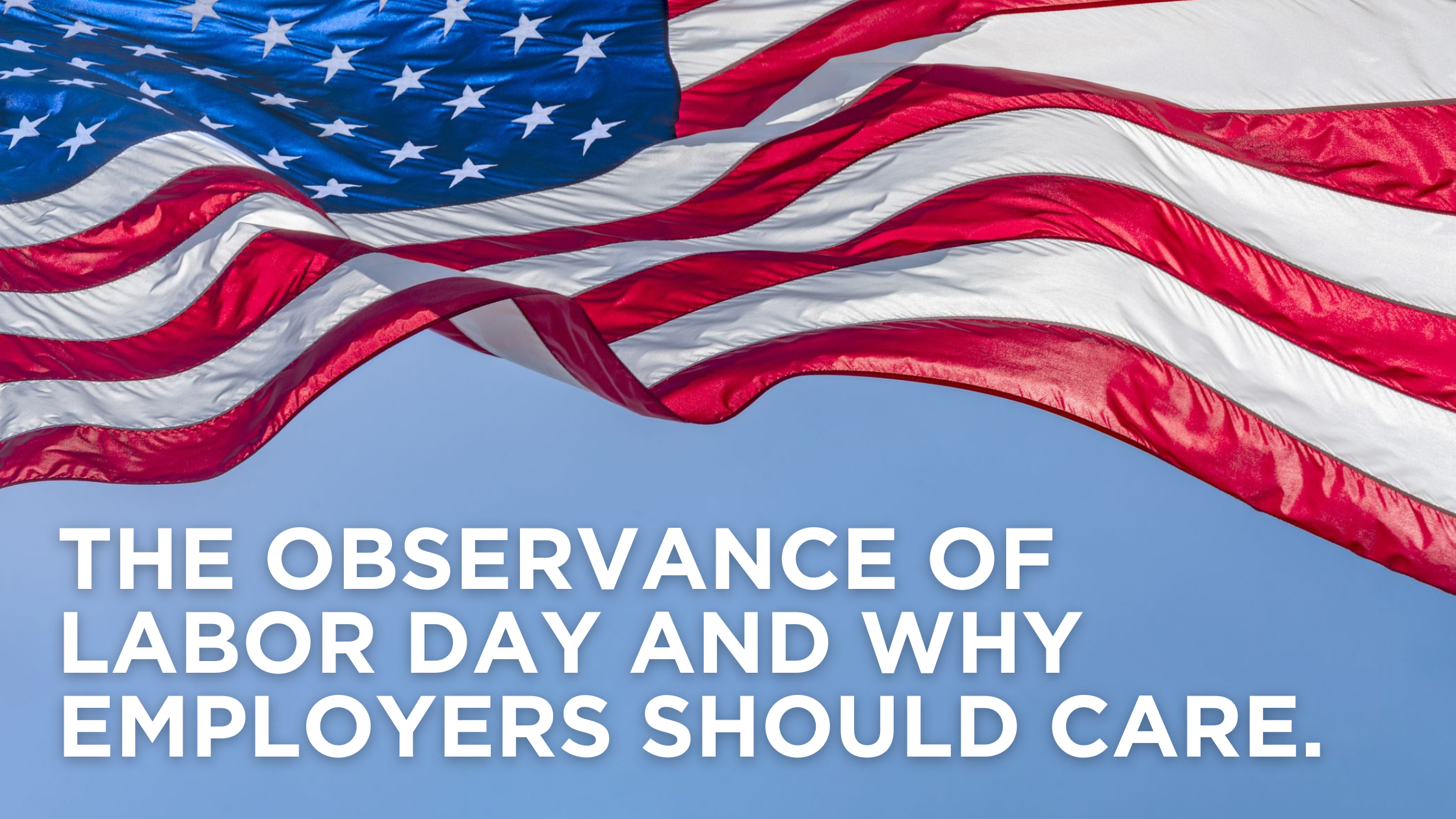The Observance of Labor Day and Why Employers Should Care

As the calendar turns to September, the arrival of Labor Day offers a moment for reflection on the labor movement’s impact and the rights and contributions of workers. What began as a tribute to unionized labor in the late 19th century has evolved into a national day to celebrate the achievements and contributions of all workers. Beyond the barbecues and long weekends, the significance of Labor Day holds valuable insights for employers in today’s corporate landscape. In this article, we at JK Executive Strategies delve into the history of Labor Day, its connection to unionized labor, and why its foundational principles continue to hold importance for employers today.
A Brief History of Labor Day:
Labor Day’s origins trace back to the late 1800s, a period marked by the rise of industrialization and the labor movement. The first observance of Labor Day took place on September 5, 1882, in New York City, organized by the Central Labor Union. It was intended as a day to honor the laborers’ contributions to society and to recognize the need for improved working conditions, fair wages, and reasonable working hours. The idea quickly gained traction, and by 1894, Labor Day became a federal holiday, celebrated on the first Monday of September each year.
Labor Day’s Connection to Unionized Labor:
Unionized labor played a pivotal role in shaping the labor movement and advocating for workers’ rights. The establishment of Labor Day was a response to the demands of workers for better treatment and improved working conditions. Unions fought for safe workplaces, fair wages, and a more balanced distribution of power between employers and employees. While the proportion of unionized workers in the U.S. has declined over the years, the legacy of these movements continues to influence labor policies and worker’s rights.
Six Reasons Why Employers Should Care About Labor Day:
1. Acknowledging Workers’ Contributions:
Labor Day is a reminder of the immense contributions that workers make to an organization’s success. It is an opportunity for employers to recognize and appreciate their employees’ hard work, dedication, and efforts in driving the company forward in a collaborative drive toward success.
2. Promoting Work-Life Balance:
In an era of remote work and increased reliance on technology, maintaining a healthy work-life balance has become paramount. Labor Day underscores the importance of allowing employees time for rest, rejuvenation, personal and family time, ultimately enhancing their productivity and overall well-being.
3. Demonstrating Employee Appreciation:
Employers can use Labor Day as a platform to express gratitude to their employees for their commitment. Showing appreciation fosters a positive workplace culture, boosts morale, increases employee engagement, and reduces turnover.
4. Encouraging Fair Compensation:
The history of Labor Day is intertwined with the fight for fair wages. This legacy should prompt employers to assess their compensation structures, ensuring that employees are fairly and equitably compensated for their contributions, skills, and experience.
5. Enhancing Workplace Conditions:
While workplace conditions have improved since the labor movement’s early days, there’s always room for improvement. Employers should consider Labor Day as a reminder to continually enhance workplace safety, health, and overall conditions for their workforce.
6. Supporting Diversity and Inclusion:
Labor Day’s core message of unity and solidarity applies to today’s diverse workforce. Employers can leverage the occasion to reinforce their commitment to diversity and inclusion, promoting an environment where every employee feels valued and respected.
Statistical Insights:
According to the U.S. Bureau of Labor Statistics, the union membership rate in the U.S. was 10.1% in 2022, with about 14.3 million wage and salary workers belonging to unions.
A 2022 ADP Research Institute study found that 80% of U.S. employees reported that they would leave their current job for one that offered better work-life balance.
In 2022, a Gallup survey revealed that only 32% of U.S. workers felt engaged in their jobs, highlighting the importance of efforts to improve employee engagement and job satisfaction.
A Harvard Business Review study reported that employees who feel appreciated are more likely to stay with their current employer and are 60% more likely to be engaged.
According to the National Safety Council, preventable work-related injuries cost businesses $167 billion in 2021, underscoring the financial and ethical importance of maintaining safe workplaces.
A McKinsey report states that companies in the top quartile for gender diversity on their executive teams were 25% more likely to have above-average profitability than companies in the fourth quartile.
A Time for Reflection and Action
Labor Day is more than just a holiday; it’s a symbolic reminder of the enduring value of workers’ contributions and the continuous pursuit of fair treatment, respect, and equity in the workplace. Employers who understand the history behind this observance are better positioned to create environments that prioritize the well-being, engagement, and satisfaction of their workforce. As we celebrate Labor Day, let it serve as a catalyst for positive change and a renewed commitment to shaping workplaces that reflect the values and aspirations of the labor movement. If your organization could benefit from guidance in recruiting for unionized roles, reach out to us at www.jkexec.com.



